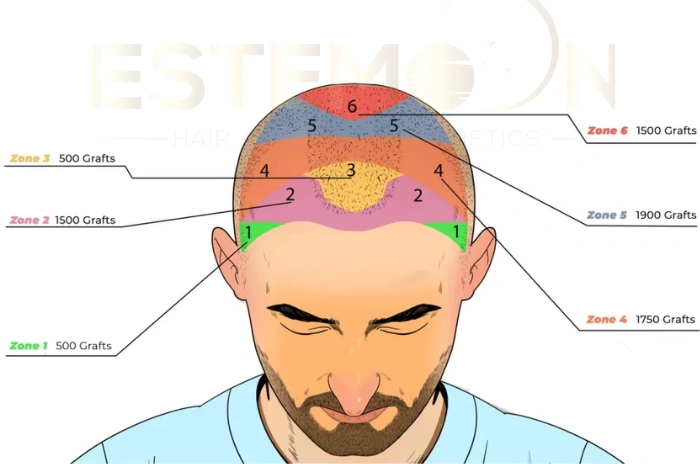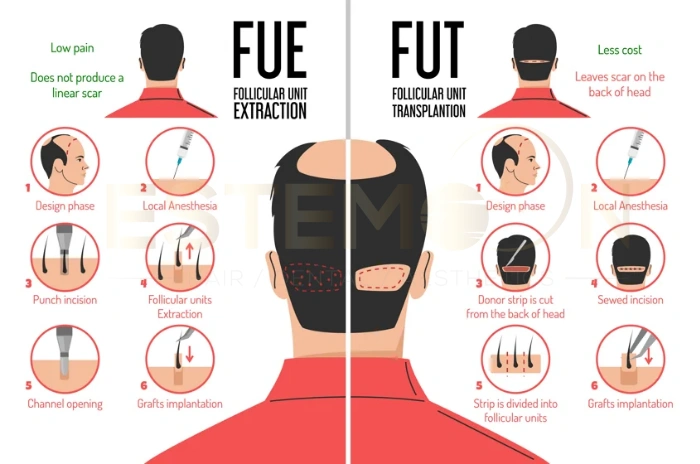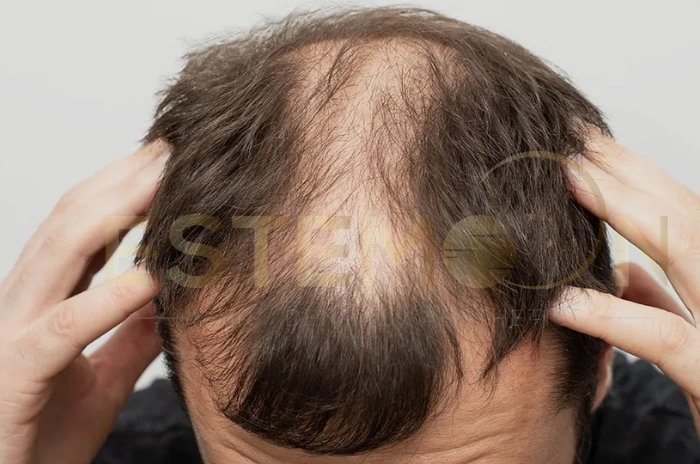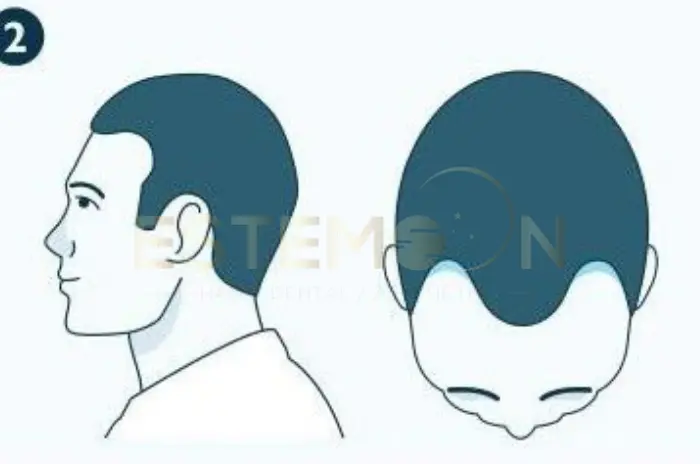Planning a hair transplant can feel overwhelming, especially when trying to determine how many hair grafts do I need for optimal results. The number of grafts required varies significantly based on your degree of hair loss, desired coverage, and individual hair characteristics. Understanding graft requirements helps you make informed decisions about your hair restoration journey and ensures realistic expectations about the final outcome.
Whether you’re dealing with minor hairline recession or extensive balding, this comprehensive guide will walk you through the key factors that determine hair graft requirements by area, methods for calculating graft needs, and what to expect during your consultation process.

What Is a Hair Graft?
A hair graft is a naturally occurring group of hair follicles that grow together as a single unit. During hair transplant procedures, surgeons carefully extract these grafts from the donor area (typically the back and sides of the head) and transplant them to areas experiencing hair loss. Understanding the composition and characteristics of grafts is essential for planning an effective hair restoration procedure.
Hair Graft vs Hair Follicle: What’s the Difference?
The terms hair graft vs hair follicle are often used interchangeably, but they represent different concepts. A hair follicle is the individual structure that produces a single hair strand, while a graft contains multiple follicles grouped together naturally. This distinction is crucial because surgeons transplant entire grafts rather than individual follicles to maintain the natural appearance and growth patterns of your hair.
When planning your procedure, surgeons count grafts rather than individual hairs because this provides a more accurate measurement for coverage and density. Each graft maintains its natural grouping, ensuring that transplanted hair grows in clusters similar to your original hair pattern.
How Many Hairs Are in One Graft?
How many hairs in a graft depends on your natural hair characteristics and the specific area being harvested. Typically, grafts contain between 1 to 4 hairs, with an average of 2.2 hairs per graft. Single-hair grafts are commonly used for creating natural hairlines, while 2-3 hair grafts provide density for the mid-scalp and crown areas.
The distribution of hair count per graft varies among individuals based on genetics, age, and hair thickness. Younger patients often have grafts with higher hair counts, while mature hairlines typically require more single-hair grafts for natural-looking results. Understanding this variation helps set realistic expectations for coverage and final density.
Key Factors That Affect Graft Requirements
Several important factors influence the total number of grafts needed for your hair transplant. These considerations help surgeons develop customized treatment plans that address your specific needs and goals while ensuring natural-looking results.
Stage and Severity of Hair Loss (Norwood Scale)
The Norwood scale graft count provides a standardized method for assessing hair loss severity and estimating graft requirements. This classification system ranges from Norwood 1 (minimal hair loss) to Norwood 7 (extensive balding), with each stage requiring different approaches and graft numbers.
Early-stage hair loss (Norwood 1-2) typically requires fewer grafts focused on hairline refinement and temple restoration. Advanced stages (Norwood 5-7) need comprehensive coverage involving the hairline, mid-scalp, and crown areas, resulting in significantly higher graft requirements.
Donor Area Density and Availability
Donor area density plays a crucial role in determining how many grafts can be safely harvested without compromising the appearance of the back and sides of your head. Patients with high donor density can typically undergo more extensive procedures, while those with limited donor hair may need to prioritize specific areas for restoration.
Surgeons carefully assess donor area characteristics including hair density, caliber, and scalp laxity to determine the maximum number of grafts available for transplantation. This evaluation helps prevent overharvesting hair transplant complications that could leave visible thinning in donor areas.
Hair Characteristics: Thickness, Curl, and Color
Individual hair characteristics significantly impact coverage and the number of grafts required for desired results. Thick, coarse hair provides better coverage per graft compared to fine hair, potentially reducing overall graft requirements. Similarly, curly or wavy hair creates more visual volume than straight hair.
Hair color contrast with skin tone also affects coverage perception. Patients with high contrast between hair and skin color may need additional grafts to achieve adequate coverage, while those with minimal contrast can often achieve excellent results with fewer grafts.
Desired Hairline Shape and Coverage Goals
Your aesthetic goals and desired hairline shape influence graft planning and distribution. Creating a mature, natural hairline requires strategic placement of single-hair grafts, while achieving maximum density across large areas demands more grafts overall.
Patients seeking conservative restoration with natural-looking results typically require fewer grafts than those wanting maximum density or coverage of extensive areas. Clear communication about your goals helps surgeons develop appropriate hair transplant planning strategies.
Graft Estimates by Norwood Scale
Understanding norwood scale grafts needed helps set realistic expectations for your procedure. These estimates provide general guidelines, though individual requirements may vary based on hair characteristics and aesthetic goals.
| Norwood Stage | Hair Loss Description | Typical Graft Range | Primary Areas Treated | Sessions Needed |
|---|---|---|---|---|
| Norwood 1-2 | Minor temple recession | 500-1,200 grafts | Hairline, temples | 1 session |
| Norwood 3 | Moderate temple recession | 1,200-2,000 grafts | Hairline, temples | 1 session |
| Norwood 4 | Crown thinning begins | 2,000-3,000 grafts | Hairline, temples, crown | 1-2 sessions |
| Norwood 5 | Crown and hairline loss | 3,000-4,500 grafts | Hairline, mid-scalp, crown | 2 sessions |
| Norwood 6 | Extensive crown balding | 4,000-5,500 grafts | Full coverage needed | 2-3 sessions |
| Norwood 7 | Severe balding pattern | 5,000-6,500+ grafts | Complete restoration | 2-3+ sessions |
Norwood 1–2: Minor Recession (500–1,200 Grafts)
Early-stage hair loss typically involves minor temple recession or slight hairline changes. Grafts needed for hairline restoration in these cases range from 500 to 1,200 grafts, focusing on creating natural temple transitions and refining hairline contours.
Procedures at this stage often achieve excellent density and natural appearance because the recipient area is relatively small. Patients can expect significant improvement with relatively modest graft numbers, making this an ideal time for intervention.
Norwood 3–4: Moderate Hair Loss (1,500–3,000 Grafts)
Moderate hair loss involves more pronounced temple recession and potential crown thinning. Restoration typically requires 1,500 to 3,000 grafts, depending on whether crown coverage is included in the treatment plan.
At this stage, surgeons often recommend prioritizing hairline and frontal area restoration, as these areas provide the most dramatic improvement in appearance. Crown restoration may be addressed in a separate session or included if sufficient donor hair is available.
Norwood 5–7: Extensive Balding (3,500–6,000+ Grafts)
Advanced hair loss requires comprehensive restoration involving multiple areas. Full head hair transplant grafts for extensive balding typically range from 3,500 to 6,000+ grafts, often requiring multiple sessions to achieve desired coverage.
Patients with extensive balding may need to prioritize specific areas based on donor availability and aesthetic impact. Strategic planning ensures optimal use of available grafts while maintaining natural appearance and preserving donor reserves for future procedures.

Graft Requirements by Area of the Scalp
Different areas of the scalp require varying numbers of grafts based on size, visibility, and desired density. Understanding hair graft requirements by area helps prioritize treatment zones and allocate grafts effectively.
| Scalp Area | Average Graft Requirements | Hair Density Goal | Key Considerations |
|---|---|---|---|
| Hairline | 800-1,500 grafts | Natural transition | Single-hair grafts essential |
| Temples | 200-500 grafts per side | Gradual recession | Blend with existing hair |
| Mid-scalp | 1,000-2,500 grafts | Good coverage | Multiple-hair grafts preferred |
| Crown (small) | 800-1,200 grafts | Adequate density | Viewed from above |
| Crown (large) | 2,000-3,000+ grafts | Full coverage | Requires multiple sessions |
| Full head | 4,000-6,500+ grafts | Complete restoration | Strategic prioritization |
Hairline and Temples
Hairline transplant grafts typically require 800 to 1,500 grafts for complete restoration, depending on the width of recession and desired hairline design. This area demands careful attention to graft selection and placement because it frames the face and significantly impacts overall appearance.
Temple restoration usually requires 200 to 500 grafts per side, using primarily single-hair grafts for natural transitions. The hairline and temples combined often account for 30-40% of total graft requirements in comprehensive procedures.
Crown (Vertex) Area
Crown hair transplant grafts requirements vary significantly based on the size of the bald area and desired density. Small crown areas may require 800 to 1,200 grafts, while extensive crown balding can need 2,000 to 3,000+ grafts for adequate coverage.
Crown restoration often requires multiple-hair grafts to achieve sufficient density, as this area is viewed from above and needs substantial coverage. Patients should understand that crown procedures typically require more grafts per square centimeter compared to hairline restoration.
Full Head Restoration
Complete scalp restoration combining hairline, mid-scalp, and crown areas typically requires 4,000 to 6,000+ grafts. These extensive procedures often need to be performed in multiple sessions to ensure proper healing and optimal graft survival.
Full head restoration requires careful planning to distribute grafts effectively across all areas while maintaining natural appearance and adequate density. Surgeons must balance coverage goals with available donor hair to achieve the best possible results.
How Surgeons Calculate the Right Number of Grafts
Professional hair graft calculator methods involve detailed assessment of multiple factors to determine precise graft requirements. Experienced surgeons use standardized techniques to ensure accurate estimates and optimal results.
The Role of Hair-to-Scalp Ratio
The hair-to-scalp ratio represents the relationship between hair color and skin tone, affecting how much coverage is needed for natural appearance. Patients with minimal contrast can achieve excellent results with lower graft densities, while high contrast situations require additional grafts.
Surgeons consider this ratio when planning graft distribution and density requirements. Understanding your specific ratio helps optimize graft placement and ensures efficient use of available donor hair.
Customized Graft Planning for Natural Results
Hair transplant density planning involves creating customized maps that show exactly where each graft will be placed. This detailed approach ensures natural hair growth patterns and optimal aesthetic outcomes while maximizing the value of each transplanted graft.
Skilled surgeons use computer-assisted planning tools and extensive experience to create individualized treatment plans. This customization ensures that your specific hair characteristics and aesthetic goals are addressed effectively.
Overharvesting Risks: Why More Isn’t Always Better
Overharvesting hair transplant procedures can lead to visible donor area depletion and compromised future procedures. Responsible surgeons carefully balance current needs with long-term considerations to preserve donor reserves for potential future treatments.
Excessive graft harvesting can result in unnatural-looking donor areas and limit options for addressing progressive hair loss. Conservative approaches that prioritize natural appearance and donor preservation typically provide better long-term outcomes.

Hair Transplant Methods & Graft Requirements
Different surgical techniques affect graft yield, survival rates, and overall requirements. Understanding how FUE vs FUT graft requirements compare helps you choose the most appropriate method for your situation.
| Hair Transplant Method | Maximum Grafts Per Session | Graft Survival Rate | Recovery Time | Scarring |
|---|---|---|---|---|
| FUE | 1,500-4,000 grafts | 90-95% | 7-10 days | Minimal dots |
| FUT | 2,500-5,000 grafts | 95-98% | 10-14 days | Linear scar |
| DHI | 2,000-3,500 grafts | 90-95% | 7-10 days | Minimal dots |
FUE (Follicular Unit Extraction) Graft Estimates
FUE graft count procedures typically yield slightly fewer grafts per session compared to FUT due to the individual extraction process. Most FUE sessions range from 1,500 to 3,000 grafts, though mega session hair transplant procedures can harvest up to 4,000+ grafts in experienced hands.
FUE offers the advantage of no linear scar and faster healing, making it ideal for patients who prefer short hairstyles. However, the individual extraction process may result in slightly lower hair transplant graft survival rate compared to FUT in some cases.
FUT (Follicular Unit Transplantation) Graft Estimates
FUT graft count procedures can typically harvest larger numbers of grafts in a single session, often ranging from 2,000 to 4,000+ grafts. The strip harvesting method allows for more efficient graft extraction and potentially higher survival rates.
FUT requires a linear incision that results in a thin scar, which may be visible with very short hairstyles. However, this method often provides excellent graft quality and allows for maximum utilization of donor hair in fewer sessions.
DHI (Direct Hair Implantation) – Does It Need Fewer Grafts?
DHI graft count requirements are similar to other methods, as the technique primarily affects implantation rather than the number of grafts needed for coverage. DHI may allow for slightly higher density placement due to the specialized implantation tools used.
The DHI method focuses on precision placement and potentially reduced trauma to transplanted grafts. While graft numbers remain comparable to other techniques, DHI may offer advantages in terms of healing time and final density.
Graft Planning and Distribution
Strategic graft placement ensures natural appearance and optimal coverage. Effective hair transplant planning involves careful consideration of graft distribution patterns and density requirements across different areas.
Strategic Placement for Natural Results
Professional graft placement follows natural hair growth patterns and creates gradual density transitions. Surgeons place single-hair grafts at the hairline and gradually transition to multiple-hair grafts in areas requiring greater density.
This strategic approach ensures that transplanted hair blends seamlessly with existing hair and creates realistic appearance. Proper angulation and direction of graft placement contribute significantly to natural-looking results.
Spreading vs Densification: Which Do You Need?
The choice between spreading grafts over larger areas versus concentrating them for maximum density depends on your priorities and available graft numbers. Spreading provides broader coverage but may result in lower density, while densification creates impressive thickness in targeted areas.
Most successful procedures balance these approaches, providing adequate coverage across priority areas while achieving satisfactory density. Your surgeon will help determine the optimal distribution strategy based on your specific goals and graft availability.
How Many Grafts Can Be Done in One Session?
Maximum grafts in one session depends on several factors including surgical technique, patient characteristics, and surgeon experience. Understanding session limits helps plan realistic treatment timelines and expectations.
Typical Session Limits for FUE vs FUT
Standard FUE sessions typically range from 1,500 to 3,000 grafts, while FUT procedures can often harvest 2,500 to 4,000+ grafts in a single session. These limits ensure optimal graft survival and minimize complications while achieving significant coverage.
Experienced surgeons may perform larger sessions when conditions are favorable, but conservative approaches often provide better long-term results. Patient comfort and safety should always take priority over maximizing graft numbers.
Mega Sessions and Risks of Overharvesting
Mega session hair transplant procedures involving 4,000+ grafts require exceptional skill and careful patient selection. While these extensive sessions can provide dramatic results, they also carry increased risks of complications and donor area depletion.
Patients considering mega sessions should thoroughly evaluate the risks and benefits with experienced surgeons. Conservative approaches with multiple smaller sessions often provide better outcomes and preserve future treatment options.
Cost of Hair Transplant by Graft Count
Understanding cost per hair graft helps budget for your procedure and compare options across different providers and locations. Costs vary significantly based on geographic location, surgeon experience, and clinic facilities.
| Country/Region | Cost Per Graft | Total Cost (3,000 grafts) | Quality Considerations |
|---|---|---|---|
| Turkey | $1.5-3 | $4,500-9,000 | High volume, competitive |
| India | $1-2.5 | $3,000-7,500 | Growing medical tourism |
| Mexico | $2-4 | $6,000-12,000 | Proximity to US market |
| Thailand | $2-3.5 | $6,000-10,500 | Medical tourism hub |
| United States | $5-15 | $15,000-45,000 | Premium pricing, regulation |
| United Kingdom | $6-12 | $18,000-36,000 | Established standards |
| Germany | $7-14 | $21,000-42,000 | High medical standards |
Cost Per Graft in Different Countries
Cost per hair graft ranges from $1-3 in countries like Turkey and India to $5-15 in the United States and Western Europe. While lower costs may be attractive, factors like surgeon expertise, facility standards, and follow-up care should be carefully evaluated.
Celebrity hair graft numbers and their associated costs often receive media attention, but individual requirements and budgets vary significantly. Focus on finding qualified surgeons who can deliver natural results within your budget rather than pursuing celebrity-inspired procedures.
Is More Grafts Always Better Value?
Higher graft numbers don’t automatically provide better value or results. Effective use of available grafts through skilled placement and design often produces superior outcomes compared to procedures that simply maximize graft numbers without strategic planning.
Quality surgeons focus on achieving your aesthetic goals efficiently rather than maximizing graft counts. This approach typically provides better value and more satisfying long-term results.
Tips Before Deciding on Your Graft Count
Making informed decisions about graft requirements involves careful consideration of multiple factors beyond simple coverage calculations. These guidelines help ensure realistic expectations and optimal outcomes.
Don’t Chase Density—Focus on Design
Effective hair restoration prioritizes natural appearance and strategic design over maximum density. Well-designed procedures with moderate density often look more natural and age better than dense but poorly planned transplants.
Work with your surgeon to develop a design that complements your facial features and provides long-lasting satisfaction. Remember that natural hair density varies across the scalp, and transplanted hair should reflect these natural patterns.
Think Long-Term: Progressive Hair Loss Planning
Hair loss often continues after transplantation, so your treatment plan should account for potential future changes. Conservative approaches that preserve donor hair and plan for progressive loss typically provide better long-term outcomes.
Discuss your family history and expected hair loss progression with your surgeon. This information helps develop strategies that remain effective as your hair loss pattern evolves over time.
Ask These Questions at Your Consultation
Prepare specific questions about graft requirements, surgical techniques, and expected outcomes. Ask about hair transplant graft survival rate, potential complications, and revision policies to make informed decisions about your procedure.
Request detailed explanations of the proposed treatment plan, including graft distribution maps and timeline for achieving final results. Understanding these details helps set realistic expectations and ensures you’re comfortable with the proposed approach.
FAQs About How Many Hair Grafts Do You Really Need? A Practical Guide
What exactly is a hair graft, and how does it differ from a hair follicle?
A hair graft is a naturally occurring group of 1-4 hair follicles that grow together, while a hair follicle is the individual structure producing a single hair strand.
How is the severity of hair loss, particularly using the Norwood Scale, used to estimate the number of grafts needed?
The Norwood Scale categorizes hair loss from 1-7, with early stages (1-2) requiring 500-1,200 grafts and advanced stages (5-7) needing 3,500-6,000+ grafts.
What factors, besides the extent of baldness, influence the total number of hair grafts required for a natural result?
Key factors include donor area density, hair characteristics (thickness, curl, color), desired hairline shape, and contrast between hair and skin color.
Are there different graft requirements for restoring specific areas like the hairline, crown, or for a full head restoration?
Yes, hairlines typically need 800-1,500 grafts, crowns require 800-3,000+ grafts depending on size, and full head restoration needs 4,000-6,000+ grafts.
How do surgeons determine the precise number of grafts for a patient, and what risks are involved if too many grafts are harvested?
Surgeons use detailed scalp analysis, hair-to-scalp ratio calculations, and customized planning maps, while overharvesting risks include donor depletion and limited future options.
Does the chosen hair transplant method (FUE, FUT, or DHI) affect the number of grafts that can be transplanted or the final outcome?
Methods affect session limits (FUE: 1,500-3,000, FUT: 2,500-4,000+ grafts) and survival rates, but total graft requirements remain similar across techniques.
What is the typical cost of a hair transplant based on the number of grafts, and does the cost per graft vary by location?
Cost per graft ranges from $1-3 in developing countries to $5-15 in Western countries, with total costs varying significantly based on graft count and location.
What key questions should I ask my surgeon during a consultation to ensure I receive an accurate graft count and a well-planned procedure?
Ask about graft survival rates, treatment timeline, revision policies, donor preservation strategies, and request detailed graft distribution maps for your specific case.
Follow us on social media for updates, tips, and patient success stories:




